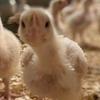The demand for poultry products continues to rise and, since the beginning of the COVID-19 pandemic, so has the popularity of backyard poultry flocks. With the current mandates for social distancing and isolation, those who are spending a greater amount of time at home view it as an opportunity to begin keeping poultry. However, as more families raise flocks as pets or to produce their own eggs and meat, the number of Salmonella infections increase.
Outbreak Investigation
As of July 29, 2020, the Centers for Disease Control and Prevention (CDC) have been investigating 15 multi-state outbreaks of Salmonella across 48 states, which are linked to backyard poultry handling. This has resulted in nearly 1,000 cases of Salmonella infection, or Salmonellosis.
Prior to starting your own backyard poultry flock, it is critical to understand the associated risks that come hand in hand, especially the threat of Salmonella, and how to manage it.
Salmonella Lives In, On, and Around Birds
Salmonella are often normal, harmless bacteria in the gut of poultry, so birds rarely show signs of infection. This means that even healthy-looking birds may carry Salmonella. It is easily spread from birds to humans through a variety of ways. Poultry can pick up Salmonella at any stage of life, even prior to the egg being laid if the mother hen is carrying the bacteria. Salmonella can also come from contaminated indoor and outdoor environments, including bedding, feed, and water, or from contact with pests or other birds.
Human Infection Can Occur Through:
- Eating contaminated food, such as eggs or meat
- Contact with live poultry such as chickens, ducks, geese, guinea fowl, and turkeys
- Contact with bird droppings
 Establishing Your Flock
Establishing Your FlockWhen beginning a backyard flock, it is important to start off on the right foot by building a home that meets the needs of your birds. To avoid any accidental spread of Salmonella and other harmful pathogens, you should place the shelter or coop away from your house and any outdoor spaces you prepare and eat food, including gardens and patios. Keep the coop closed off from rodents and wild birds as they can also carry and spread bacteria. It is always a good idea to make sure tools, waterers, feeders, and feed storage areas are clean and sanitized.
When buying poultry, source them from hatcheries that are certified by the United States Department of Agriculture National Poultry Improvement Plan (USDA-NPIP), a program that regularly tests for Salmonella in the hatchery.
 Reducing the Risk of Salmonella
Reducing the Risk of SalmonellaAny time you handle poultry or work in their environment, wear a dedicated pair of boots and clothes to prevent Salmonella spread to and from your flock and keep you from getting sick. In addition, cleaning and sanitation are key to reducing Salmonella in your flock and the environment. Regularly clean everything that comes into contact with poultry or their droppings, such as tools, boots, and clothing. This is best done outside to avoid bringing Salmonella into your home. Diluted bleach or other disinfectants are your best friend for cleaning contact surfaces, but bottled dish soap or commercial disinfectants are also handy for use in poultry enclosures.
If tools or other equipment are covered in dirt, droppings, or other debris, you should scrub them with a brush and warm, soapy water before using a disinfectant because pathogens can quickly accumulate on the residues remaining after cleaning.
Global pandemic or not, social distancing is your friend and your flock’s friend when keeping backyard poultry. Don’t allow visitors to interact with your birds, as they may bring germs into your flock or carry germs from your flock to their home environment. It may be tempting to be a good neighbor and share equipment with other poultry keepers, but this too can spread Salmonella.
Practicing good biosecurity such as wearing dedicated boots and clothes, regular cleaning, and restricting visitors can greatly aid in keeping you and your flock healthy and Salmonella free.
 How to Safely Handle Poultry
How to Safely Handle PoultryMany forget that Salmonella infection can result from simply handling their birds or maintaining their enclosure, but it is an important concern in the age of backyard poultry keeping. In fact, Salmonella can survive on a bird’s body and feathers. Any time you handle birds or work in the spaces they roam, you should wash your hands with soap and warm water. If soap or water are not available, you may also use hand sanitizer.
Children under 5 years of age are more susceptible than adults to getting sick from Salmonella, so they should be closely monitored and not allowed near your backyard flock unsupervised. Never touch your face when you handle birds, and don’t hold birds near your face, snuggle, or kiss them. Lastly, do not allow poultry into the house, especially the kitchen, and don’t eat or drink near backyard poultry.
 Watch Their Welfare
Watch Their WelfareIt is vital to recognize when your flock’s welfare is threatened. Stress of all kinds can increase a bird's susceptibility to new bacteria, such as Salmonella. Environmental stress, such as heat, may harm the intestines and result in greater gut colonization, spread, and shedding of bacteria. Overcrowding, or keeping too many birds in an enclosed space, can also increase the risk of Salmonella in your flock, as can poor welfare conditions resulting from insufficient hygiene or poor biosecurity practices.
While Salmonella rarely harms poultry, you should always be attentive to your flock’s health and monitor their behavior. Some strains of the bacteria may cause infection in birds, and your flock may suffer as a result. Birds with Salmonellosis might eat or drink less, look dirty or have ruffled feathers, appear lethargic or depressed, or be less active. They may also have diarrhea. If this is the case, consult your veterinarian.
Stop the Salmonella Trend
Salmonella is a major cause for concern among poultry producers, including backyard poultry keepers, for its natural presence in birds and ease of transmission into the food supply. This year has already seen a significantly greater amount of reported Salmonella cases linked to backyard poultry flocks than has been observed in previous years at the same time.
As the trend of keeping backyard poultry continues to increase, particularly as COVID-19 looms over our heads and many find more reasons to establish flocks at home, keepers must not turn a blind eye to the threat of Salmonella that may now exist on their very own property, in the birds they raise and the products they collect.
Before you go
- Keep poultry away from your home and garden
- Source birds through
- Wash hands after handling
- Wear boots around poultry
- Clean and disinfect spaces and tools appropriately
- Keep birds away from human food and drink
- Keep children away from poultry
- Do not kiss or snuggle birds
- Pay attention to flock welfare


 Establishing Your Flock
Establishing Your Flock Reducing the Risk of Salmonella
Reducing the Risk of Salmonella How to Safely Handle Poultry
How to Safely Handle Poultry Watch Their Welfare
Watch Their Welfare
























